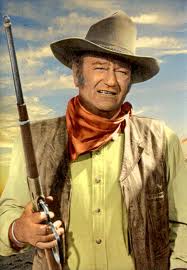In any event, you know the choral season is busy when a choir presents a concert of carols and Christmas Music at 3:00 P.M. on a Saturday afternoon!
That's why I was at Central Presbyterian Church in Hamilton yesterday hearing Ensemble Lyrica, a 24-voice choir conducted by Brent Fifield, the organist at Trinity Anglican Church in Cambridge. They were accompanied in some numbers by Central Presbyterian organist Paul Grimwood.
 |
| Brent Fifield |
This is a group of 27 enthusiastic amateur choral singers (including John Laing, who no longer conducts the eponymous singers) and a couple of others whose names I recognized. The choir was founded only in 2011 and gets by on bi-weekly rehearsals. I suspect that all of the participants sing, at least, in a church choir and some of them in another choir as well.
The choir was very well prepared by Fifield. The words were frequently intelligible in English, French and German (this is a rather live acoustic space, ideal for the big 80 rank Casavant organ).
As is often the case with small choirs of amateur singers, individual voices sometimes stuck out. There was occasionally some shoutiness from the basses. The sopranos make unnecessary crescendos on many of the higher notes in the manner of some trebles.
A half dozen of the choristers took turns as soloists giving some insight into the overall sound of the choir. There's a least one real young tenor (Matthew Bowman) and a good baritone (Peter Dooley, also probably a tenor) who matched soprano Stephanie Fifield note for note.
They sang 15 seasonal pieces in two short halves punctuated by an overly long interval.
Among the highlights, I heard, for the first time, Johann Eccard's Über Gebirg Maria geht, a lovely high Renaissance carol. Choir conductors who don't know this one should look it up.
There were two Vaughn-Williams pieces. Wither's Rocking Hymn and the Fantasia on Christmas Carols with Roland Fix as soloist.
They sang Michael Praetorius' two choir In Dulci Jubilo which was followed by Grimwood's rendition of Denis Bédard's showy organ variations on the same theme.
The choir performed Howells' Here is the Little Door. It's a pretty little piece, unlike the big, effusive Howells works with which I am more familiar.
I must mention Bob Chilcott's The Time of Snow. It's a lovely, quiet work. With Paul Grimwood at the piano for the only time, playing the vaguely Japanese sounding accompaniment, it made an effective contrast to all the other music. This is another work conductors should look for.
They finished with Imogen Holst's familiar arrangement of Here We Come a Wassailing.
All in all, I'll return in the spring to hear their next concert and other choral afficionados from this region should too. This is a good little choir. They are well prepared and sing interesting repertoire. This recital was free with a good will offering. What else do you want?























